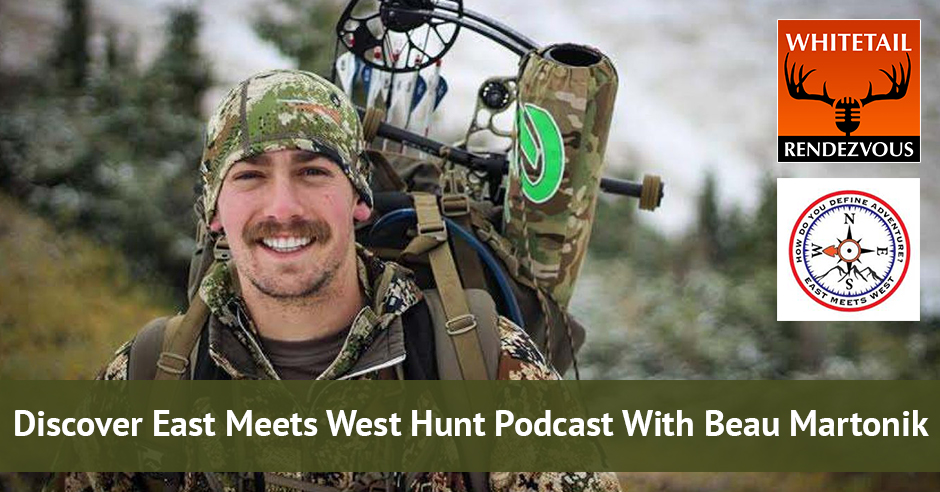
—
Listen to the podcast here:
Discover East Meets West Hunt Podcast With Beau Martonik
We’re going to head to Pennsylvania and talk with Beau Martonik. Beau is the host and Founder of East Meets West Hunt Podcast. I’m excited after our warmup, I’m ready to go hunting.
We could have talked for hours before we even hit record about the upcoming honey season. It’s getting excited with the stories.
It’s amazing. I know you started in Pennsylvania hunting mountain bucks. Let’s start with the beginning. Go back to when you started hunting bucks.
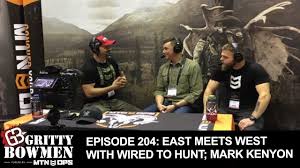 I grew up right in the heart of Allegheny National Forest in Pennsylvania. A lot of people think of Pennsylvania as these giant tracks of public land, but we have over 2.1 million acres of public land just in Northern Pennsylvania alone and most of that are just big woods. Some bits are steep, some bits are more rolling, it’s a big timber country. I grew up hunting whitetails there. My family is a huge whitetail hunting family, specifically using archery. I learned to do that at a young age. It’s one of the things I’m always involved in loving whitetails, wanting to get better at hunting them and going to new places to hunt them. Growing up, I always thought that hunting in the big woods was a disadvantage to what I’m seeing on TV with these people hunting, the agricultural field, food plots and everything. As I grew older, I realized that it’s special in its own and I honestly prefer it. A lot of times, you might not have the antler size that some of the ones that are getting fed a bit better, but you’ll get some old gnarly deer that grow up in this country and I got my teeth on it. I’m doing it until the day I die.
I grew up right in the heart of Allegheny National Forest in Pennsylvania. A lot of people think of Pennsylvania as these giant tracks of public land, but we have over 2.1 million acres of public land just in Northern Pennsylvania alone and most of that are just big woods. Some bits are steep, some bits are more rolling, it’s a big timber country. I grew up hunting whitetails there. My family is a huge whitetail hunting family, specifically using archery. I learned to do that at a young age. It’s one of the things I’m always involved in loving whitetails, wanting to get better at hunting them and going to new places to hunt them. Growing up, I always thought that hunting in the big woods was a disadvantage to what I’m seeing on TV with these people hunting, the agricultural field, food plots and everything. As I grew older, I realized that it’s special in its own and I honestly prefer it. A lot of times, you might not have the antler size that some of the ones that are getting fed a bit better, but you’ll get some old gnarly deer that grow up in this country and I got my teeth on it. I’m doing it until the day I die.
Who got you started on hunting?
My dad for the most part and both my grandparents. Both my grandfathers on each side were big into it, so from a young age I was around it. Always watching them, I wanted to be like my dad and my grandpa. They would come back in October, as a kid I’d always be dressed up for Halloween and they’d bring their deer back and be so excited with it. I’ve always looked up to them as a role model in life and they’ve put me down the path that I am now.
Was that basically the genesis of East Meets West Hunt Podcast?
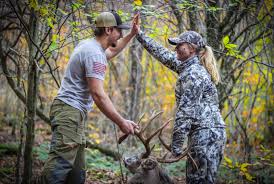 Yes and no. The idea behind the podcast started when I took a different turn. Up until 2016, I would only hunt Pennsylvanian and Ohio whitetails. In Southern Ohio, I only hunted in a big timber type area similar in Pennsylvania. In 2016, I went west for the first time and chased elks. When I did that, I fell in love with it, I came back and wrote an article about it. At that time, I was not a writer. I just wrote it for myself a story to hunt and ended up submitting it to an online magazine that ran the story. I got a lot of feedback from people saying they wish they could do that or wished they had that kind of money or time. All of that wasn’t true. I don’t have a lot of money. I just do a lot of research to figure out how to do it. I realized that there was a gap in information for those of us in the East Coast and even through the Midwest that to plan these adventure, you’re able to do that through a do-it-yourself over-the-counter tag type hunt and do that on a relatively low budget, that’s in reach of everyone if you plan it out correctly.
Yes and no. The idea behind the podcast started when I took a different turn. Up until 2016, I would only hunt Pennsylvanian and Ohio whitetails. In Southern Ohio, I only hunted in a big timber type area similar in Pennsylvania. In 2016, I went west for the first time and chased elks. When I did that, I fell in love with it, I came back and wrote an article about it. At that time, I was not a writer. I just wrote it for myself a story to hunt and ended up submitting it to an online magazine that ran the story. I got a lot of feedback from people saying they wish they could do that or wished they had that kind of money or time. All of that wasn’t true. I don’t have a lot of money. I just do a lot of research to figure out how to do it. I realized that there was a gap in information for those of us in the East Coast and even through the Midwest that to plan these adventure, you’re able to do that through a do-it-yourself over-the-counter tag type hunt and do that on a relatively low budget, that’s in reach of everyone if you plan it out correctly.
My goal was for myself to learn more about Western hunting by talking to some of these great guests I’ve had on but also to be able to throw the mic on and have everyone else learn and be inspired to try it out. What I learned in the process was that, what I was doing my whole life in Pennsylvania hunting mountain bucks is that’s an adventure to a lot of people too, including myself. There are some adventure style hunting close to home. You might live in the Pittsburgh area. You can drive two hours and be in the “Mountains of Pennsylvania.” I’ve encompassed the two of them in my slogan of, “How do you define adventure?” What that means is that adventure is yours to define, whether if that is an Alaskan sheep hunt or a mountain buck hunt in Pennsylvania, it’s up to you. I want to give people information on these types of hunts and inspire them to be able to do that.
I love how you said that because many people that I talked to in my podcast are misinformed. They think they need to have a lot of money to come to Colorado and go DIY elk hunting. I put in for a limited area tags, I don’t get them every year but I can go hunt elk every year in areas I know there are bulls. To me, at this position, it’s the journey and adventure, making memories with your brothers and sharing those adventures. That’s what gets me stoked about this whole hunting journey that I’m on. I think that conversations in warm up, you are exactly the same way.
Make a decision to hunt the west - Learn from East Meets West Hunt Podcast Share on XYou couldn’t have said it any better. For me, at least for the Western hunting stuff, I don’t care about the size of the animal or anything. I’m hunting the experience. Don’t get me wrong, I 100% go there and try to fill the tag and I would love to shoot a big bull. I love that but that’s not all of it for me. I’ve been able to do this on a regular working man’s budget. I have a full-time job, I work every day and I’ve been able to plan my life a little bit around it. Hunting is something to me that is deeply ingrained. I’ve made it a priority. There are things that come first like bills and family and anything else. You can make those a priority and still do this on a relatively low budget. It’s not out of reach to anyone.
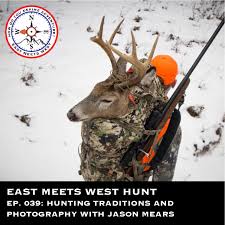 With your show, let’s talk about your guests and why you invite them on so they can share something educational and knowledge.
With your show, let’s talk about your guests and why you invite them on so they can share something educational and knowledge.
What I’d like to do with the podcast is I try not to go too far out of their realm and niche that I have with it. I try to think of questions that I had as far as an Eastern guy heading out west for hunting. I want to bring people on and talk about these things. Don’t assume that people know certain terms, I’ve learned so much from a lot of the Western hunting podcasts out there, but it took me awhile to even get to the baseline of what they were talking about. I want to make people not feel intimidated about it. I want to hear their stories but I want to make sure that everyone’s got a takeaway from it and realize that it’s not out of reach. I don’t want to make it sound like it’s extremely easy by any means, but I wanted to show that with some work and some planning that you can make that stuff happen. That’s what I look for when I’m looking for guests for certain topics. For anything else, I have that idea in my mind and ask people that they would be a good fit for those specific ideas.
Most of my readers are whitetail hunters and covet the opportunity to come out west and hunt elk. If you could be so kind as to share with my readers the top five or ten things that you’ve learned with your program with them?
One of the things I want to start out with is the hurdles I see with the budgeting and price. Everyone thinks that you need to have a lot of money in gear and everything else to do it. I’m a gear junkie, I love that kind of stuff. When it comes down to if I can get a tag to getting the newest gear, I’m going to get a tag. It’s all about getting out there. The first thing you need to do is commit, plan it, put it down on the calendar, say you’re going to do it. Everything else after will take some more work and planning but the biggest thing is committing to doing the hunt and figuring out what your expectations are. If you want to go out and you’re happy with the experience, you fill a tag, then that’s great. If you don’t, that’s still great. That’s going to be different as far as your goals go than if you plan on going out, shooting a 330-inch bull. All you care about is checking that off a bucket list. I’m not saying there’s anything wrong with either of them but you have to have that upfront. If your idea is shooting a bull, then you’d have a better chance in saving money going with an outfitter. If you want that adventure side of things and everything on those lines, you need to buy a tag.
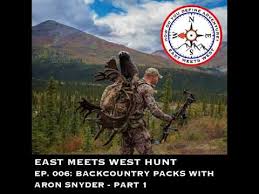 The going rate, let’s take the top five states. Looking at Colorado, Idaho, Wyoming, Montana, New Mexico, you average that it’s somewhere around $700 for an elk tag. Some are less, some are more. If you can get a couple of buddies talked into it with you to drive out there, you can split the gas. You can go out there on a 3,000-mile round trip, gas is $2.5 a gallon, it probably would be $500 for the round trip. If you split that up between a few people, you’re looking at around a few hundred dollars a person. Then with the central gear, there are certain gear items that you probably should spend some money on, say $500 to $700 in gear for your first trip going there and $200 in food you should be spending on groceries. Your total cost of the hunt would be somewhere around $1,900 to $2,000. You can definitely bring that down depending on what your needs and wants are from a gear standpoint and how you logistically figure that out.
The going rate, let’s take the top five states. Looking at Colorado, Idaho, Wyoming, Montana, New Mexico, you average that it’s somewhere around $700 for an elk tag. Some are less, some are more. If you can get a couple of buddies talked into it with you to drive out there, you can split the gas. You can go out there on a 3,000-mile round trip, gas is $2.5 a gallon, it probably would be $500 for the round trip. If you split that up between a few people, you’re looking at around a few hundred dollars a person. Then with the central gear, there are certain gear items that you probably should spend some money on, say $500 to $700 in gear for your first trip going there and $200 in food you should be spending on groceries. Your total cost of the hunt would be somewhere around $1,900 to $2,000. You can definitely bring that down depending on what your needs and wants are from a gear standpoint and how you logistically figure that out.
Let’s say you’re planning on doing that a year out. That’s $165 a month. If it was two years, that’s $83 a month. That’s still a lot of money. When you think about the things you spend your money on daily when you have Netflix subscriptions or Sirius radio, and say you have a newer truck that you’re paying anywhere from $400 to $600 a month. What if you turn your vehicles into something a couple of years older and save a few hundred dollars a month? There are different things from a budgeting standpoint that you could do to make this happen. I bring these things upfront again, because the biggest roadblocks that I’ve seen from people is the money thing.
After that, when it comes down to preparing for the hunt, this is another thing that’s a big learning curve. There are so many tools out there. The biggest rule is your mind, the knowledge that you gain, like listening to podcasts, just try to get that information in and learn as much as you can. One thing that helped me out a lot when I started going out west specifically for elk hunting was Corey Jacobson, his Elk 101 has the University of Elk Hunting. It’s an online course that you subscribe to. It lays it out from beginning to end, everything through it to make that elk hunt happen. It’s a little bit of investment with about $100 a year. In the grand scheme of things, it’s nothing for the knowledge you’ve learned and how you can be a lot more prepared for that hunt. That’s another thing that I’ve found helpful. It’s investing yourself in knowledge and having plans going forward.
You don’t need a lot of money to go hunting. Do a lot of research and figure how to do it. Share on XWith whitetails, that way I grew up, I wanted to go into an area and scout it out. I’ll strap on my boots and I went for a hike. I looked for the rubs, scrapes, bedding areas, trail features and all that. What’s nice now with things like onX has their hunt app and Google Earth, you can scout from a couple of thousand miles away and at least have an idea of what you’re getting into. By utilizing that information, you’ve learned on a podcast or reading with where the elk live. You can put those pieces together and create yourself a hunt plan and stay organized. Have five areas that you think would go to, one being your primary, then having backup spots. Once you go on some of these trips, you get out there and you don’t find elk and you don’t have a backup plan, you start scrambling. You start stressing yourself out and it makes it a lot easier for you to quit. When you have a system in place to prepare for that, then you’re a lot more apt to succeed because you’re organized. It goes that way in anything in life. When you have that plan in place, it seems to help out more.
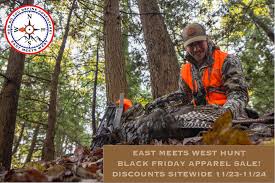 Another thing that I’ve learned from personal experience and as well as from my guests is the physical preparation. It’s physical conditioning for going on these hunts. Am I saying that you need to be in the best shape possible to succeed? No, I’m not saying that. One of the things I always say is, “You’ll never wish you had worse shape.” I thought I was in good shape. I get out there and the elevation would hit you. I felt like I was short on breath and the mountains looked a lot bigger than on the internet, that’s for sure. That was a big thing for me. Some of the things that I did to prepare for that, I worked out every morning. It’s one of those things that I just stayed disciplined with, wake up at 4:30 in the morning and go workout. What I think is more important than the type of workout your doing is just being consistent with it. If you’re walking two miles a day, then all of a sudden, you’re doing three miles, 2.3 miles or 2.4 miles, that’s better than the day before. It’s constantly working on it and staying consistent. The physical conditioning aspect has been a big proponent in getting ready for a hunt.
Another thing that I’ve learned from personal experience and as well as from my guests is the physical preparation. It’s physical conditioning for going on these hunts. Am I saying that you need to be in the best shape possible to succeed? No, I’m not saying that. One of the things I always say is, “You’ll never wish you had worse shape.” I thought I was in good shape. I get out there and the elevation would hit you. I felt like I was short on breath and the mountains looked a lot bigger than on the internet, that’s for sure. That was a big thing for me. Some of the things that I did to prepare for that, I worked out every morning. It’s one of those things that I just stayed disciplined with, wake up at 4:30 in the morning and go workout. What I think is more important than the type of workout your doing is just being consistent with it. If you’re walking two miles a day, then all of a sudden, you’re doing three miles, 2.3 miles or 2.4 miles, that’s better than the day before. It’s constantly working on it and staying consistent. The physical conditioning aspect has been a big proponent in getting ready for a hunt.
Switching back to the gear side of things, whatever gear you decide to use, make sure you know how to use it, you know the ins and outs of it. Practice on packing your bag, put everything in there and take it out again, put them back in, put it on your back and see how it feels, take it out and do it again. When you’re out there and the weather gets bad or it gets dark and have your head lamp die, just having the knowledge on how to work yourself around, like what they teach in the military, is super helpful. From personal experience and talking to a lot of guests, there are a few items gear-wise that I think are worth spending money on, the quality gear. A backpack is important for these types of hunts because if you’re going to be hauling meat out of the backcountry yourself or with some buddies, a quality pack can increase your comfort. That’s what’s on your back every single day. Something like that is important. My first trip, I found a Memorial Day sale on a backpack. I bought it and it was supposed to be a good pack, ultra-lightweight but it ended up failing. I tightened down the straps and the bag ripped and had a main buckle break. I made sure that I bought a quality pack the next year. With that being said, it didn’t ruin my hunt but it’s something that I’d rather not happen.
The other thing is boots. You spend every single day on your feet, finding the pair that fits you and your feet is essential. Finding a place to try on boots for Western hunting is difficult in the east and midwest. I found that looking for places online that allow free return shipping and exchanges is crucial. Wear them around the house, climb up your steps. Do different things that doesn’t ruin the chance of returning them but you get a good feel for it. Everyone’s feet are different. I can’t say that X brand or X style is the one you need. That’s not the case. Everyone’s need is a little different. Finding something that fits you is important in my opinion.
I would say the most important thing for the Rocky Mountains, wherever you happen to be there, is first your boots because if you get a blister, you’re done. I don’t care if you paid $1,000 for your tag or you’re paying an outfitter $10,000. It doesn’t matter, you are done. Even if you’re on horses, you can’t get to where you need to get to. Readers, I’ve talked about that before with other guests. The most important thing you can do is get good boots. That’s even before your new bow, broad heads, knife, backpack or anything because your feet have to get you up that ridge. When you have 100 pounds on your back, your feet are going to scream at you. I’ve been there and I’ve screamed. I made it but it was ugly.
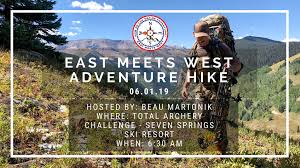 I had good deer but over the years, I’ve learned that you can’t cheat the mountains. You have to have the gear that will match whatever you want to do. You have to have a good day pack that has a pack frame. Day pack hangs on the pack frame that you’re going to use to get your meat off the mountains or get your spike camp up the mountain. Those are the two things that you have to have that’s reliable and bulletproof. There are a lot of companies out there that you can buy any of their packs and you’ll be golden. You’re going to spend bucks though. Like your boots, you’re going to have to spend more than your wife spends on her shoes, but we’re talking long-term. You’re probably going to be in the Rockies ten days more or less per year, unless you’re really fortunate to have multiple trips.
I had good deer but over the years, I’ve learned that you can’t cheat the mountains. You have to have the gear that will match whatever you want to do. You have to have a good day pack that has a pack frame. Day pack hangs on the pack frame that you’re going to use to get your meat off the mountains or get your spike camp up the mountain. Those are the two things that you have to have that’s reliable and bulletproof. There are a lot of companies out there that you can buy any of their packs and you’ll be golden. You’re going to spend bucks though. Like your boots, you’re going to have to spend more than your wife spends on her shoes, but we’re talking long-term. You’re probably going to be in the Rockies ten days more or less per year, unless you’re really fortunate to have multiple trips.
One thing you said is something that took me time to learn. When you buy, maybe you are spending more money on these boots and pack but they’re going to last you a lot longer as well. Not only are you going to be more comfortable and apt to want to climb that next ridge after five days of grinding it out in the mountains. They’re going to last a lot longer and you’re going to get that money back. Where you’ll spend on three different pairs of middle to lower end boots, you’ll have in one pair of high-quality ones. I try the “buy once, cry once” mentality when I can. That comes over time with all the gear now. I feel like after years of doing it, I have a pretty good system and a lot more high-quality gear than when I started. It’s buying a little bit at a time and the planning for that. That’s a big thing.
Another item, especially if you want to do a backpack style hunt, proper clothing layering systems can truly make you break that hunt. The biggest thing is remembering that cotton is not a good option. It’s not your friend in the mountains. If you can remember that, you’re off to a good start and that starts with your underwear and socks. I can’t tell you how many people would go and buy a nice pair of pants and a jacket but they forget about their base layers. The most important part is being able to manage that moisture. When you’re hiking in the morning and it’s colder, you might have a light jacket on top of your base layers. As you start going, it starts warming up and your body temperature is heating up. You need to be able to take that off and not have your base layers soaked. Cotton won’t dry. That’s not something you want. That could even be detrimental to your safety as well as your comfort. That’s something that I’ve learned over the years and I educated myself on that.
The size of the animal you’re hunting doesn’t matter. Hunt the experience. Share on XGoing back to the knowledge in your head and knowing how to read a map. I use an app on my phone now, onX is my main GPS but I also carry a paper map and I know how to use that and read topographical lines and everything else. I’ve always done that for whitetails hunting where I do, but it’s even more crucial out west in my opinion. That’s something I think is important. Bruce, do you have any other comments on the mapping side of things?
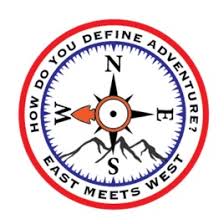 I was on with Michael Fuchs, he writes for Sportsmen’s Nation. He uses topographical maps to find buck beds. He can look at a topographical map and tell you where the buck bed is going to be. If you can read it, the contour lines that are close, that means it’s steep. Further apart, it’s flat Earth. You can mark out saddles. You can mark out the little ridge that comes off the main ridge where the buck can lay on top of and drop into a pasture or a creek. You can see that on topographical map. People who are tuned to topographic maps are better hunters, more confident and they can set up a mature buck because they can set up where exactly he’s going to be. He’s good and he’s a student of Dan Infalt, who is one of the masters in my opinion.
I was on with Michael Fuchs, he writes for Sportsmen’s Nation. He uses topographical maps to find buck beds. He can look at a topographical map and tell you where the buck bed is going to be. If you can read it, the contour lines that are close, that means it’s steep. Further apart, it’s flat Earth. You can mark out saddles. You can mark out the little ridge that comes off the main ridge where the buck can lay on top of and drop into a pasture or a creek. You can see that on topographical map. People who are tuned to topographic maps are better hunters, more confident and they can set up a mature buck because they can set up where exactly he’s going to be. He’s good and he’s a student of Dan Infalt, who is one of the masters in my opinion.
What you said right there, it is a lot of it when it comes to hunting bucks in Pennsylvania. I like to scout a lot on springs and I’ll put out a map. I feel that each area is a little bit different but they typically bed on similar elevations and the way the train features go. When you’re on a point of a ridge, they can get that dominant wind coming at their back and that they’re utilizing the thermals in the mornings and in the evenings, being able to see down over the hill. There are so many things, but you should be able to read those topographical lines on the maps. My goal there was being able to figure that out. That’s a huge thing when it comes to hunting the big timbered regions.
One thing if you’re hunting whitetails or if you’re hunting elks, the first time I hunted elk was back in the mid-‘80s. We came up from Wisconsin, I look for benches in the topographical maps and then north-facing benches, look for the points then look for saddles. Join it all together, I did get to within 50 yards of a bedded bull. It was my first elk hunt and I got excited. I got enough hair off him to make a callus fly. First, I knew where he was. Secondly, I smelled him but then I wasn’t ready. I didn’t see him before he got up. By applying what I learned from a good writer and hunter, Dwight Schuh, I was able to do it. I just transfer what Beau, Corey Jacobsen, Randy Newberg and Jay Scott are sharing with you, all these guys know how to do it. If you become a student, then you can have thrills for a lifetime.
You can make your family and bills a priority and still hunt on a relatively low budget. It’s not out of reach to anyone. Share on XWith elk, Corey specifically, along with those other guys, helped me a lot on that. When I had him on the podcast the first thing around, I already went through his online course three times. My first year out there, he talked about more facing slopes and dark timber is a lot of time where the elk like to bed. If you could find an area with some feeds, meadows and water all in those areas, that’s a pretty good spot. I had marked on my GPS potential elk bedding spots ahead of time. The first night that I packed in, they were heading up to where we’re going to set up a spike camp. I looked across this canyon. One of the spots I marked for elk bedding was over there. I bugled down into that canyon, walked out in that canyon and one bugled from its bed right in that spot. It was such a good feeling knowing that all this information I got can work. That can always be the case or there will always be an elk bed there, probably not but that helps so much for being able to understand that and being able to look at those maps and trying to have a game plan going into it.
The other thing I want to share with a couple of outfitters is bow hunting. They said they love to take bow hunters from the Midwest elk hunting because they know how to be quiet, they know how to stop and do all those types of things. They make such good hunters because elks live in humongous areas, 10,000 acres an elk herd may live in but at any one time, they’re only at 10% of that habitat. You have to find them, then it becomes like a cat and mouse game just like it is with whitetails. If you just read what Beau mentioned, he got the information, got schooled up and said, “I can do this.” He got his maps out and figured it all out. That’s the perfect place, he bugled and a bull responded. It boosted up his confidence, because he knew people that have looked up to Rocky Mountains, at the base and thought it wasn’t possible. It isn’t if you take it apart, put it in 400-acre parcels and figure out where the elk are.
It is a similar mentality when it comes to whitetails, when you’re scouting a piece of public land or farm, you’re taking these pieces and you’re trying to narrow it down to the most likely areas that they might be, then focusing in on those smaller areas. What I try to do is I look at a giant area of a unit and start picking out ten spots that look good from afar. Then I’ll start dissecting those smaller areas and put them together like a list of what I think has the best potential and what is the lowest. Organize it that way and the only thing you can do after that is going in and seeing if your research planning is true. It might not be, as you mentioned, they only live in 10% of their range at any time. You might go in there, it might be the perfect-looking elk habitats, but they might not be there. That’s the game. You have to keep going and don’t get discouraged with that. In my experience, elk hunting is a very mental game. You have to be confident when you have these plans put in place. You always need to have back up plans because things aren’t going to go right at first. If they do, that’s great but they don’t always go that way. You need to keep trying. Keep grinding for it.
The only thing that I’d add is that if you see a fresh sign of poop on the trail that you can stick in your finger in and it squishes, then you’re doing okay. If it’s hard like a pretzel and there’s no fresh sign, there’s no mucked-up wallows and there are no fresh shrubs, the elk aren’t there. They could be there tomorrow or in five days or never that season. They’ve already moved through and taken the best food off and it’s starting to rot, the bulls get chased out or he’s fed up and going somewhere else. You have to find fresh sign. If you don’t, get out of there. You can hunt all your life. If there’s no mature buck there, you’re never going to kill.
One thing I’d like to add there, Bruce, is an experience I had. I was in Colorado and I went to a spot I spent in the previous years. There were always elks out there. I went and we were about three or four days behind, we had to keep moving. It was a lot drier the previous year and the food wasn’t there. They had moved out and to go lower wasn’t allowed because it was all private land. I had to move to a completely different area, different elevation, just change it up before I ended up getting into elk. It took six days before I got into them. I was constantly moving until we found them. You see fresh sign a lot better than I do but it’s something that I’ve been picking up on. If it’s not fresh, you can usually smell them like they were there, then you’ve got to keep moving.
The best sign I ever smelled was a barnyard. You can smell poop and pee and smell the rotting bull. If you get that in your face, stop, knock an arrow and figure it out. It’s fun, the adventure, I’m learning a lot from Beau. We’ve already burned on 40 minutes but this won’t be the last time. You’ve lived up to everything that I had hoped. You’re wonderful for the industry. We need young people like you that can figure stuff out. Better than that, Dan Johnson, he’s a communicator, an influencer. He educates people about what we’re passionate about, you’re right in that league. I’m honored that we’ll develop our relationship and maybe we’ll hunt together sometime.
I enjoyed this conversation. I definitely hope we can chat some more in the near future. I’m looking forward to seeing how your season goes.
Closing thoughts, Beau?
The last thing I want to say, Bruce, to anyone reading is if you ever have the inclination to want to go on a Western hunt or any hunt that’s out of your comfort zone, put it on the plan and do it. It’s easy for me to say that but you will not regret it. You can prepare as much as you want for your first hunt out west and you’re still not going to be 100% prepared. That’s okay. You’ll learn so much by doing it. I can promise you that if you do it once, you’ll figure out how to do it again.
I can’t wait until the next time, Beau.
That sounds good, Bruce. Thank you.
Important Links:
- East Meets West Hunt
- Elk 101
- University of Elk Hunting
- onX
- Sportsmen’s Nation
- Dan Infalt – linked to a previous episode
- Dwight Schuh
- Podcast – Corey Jacobsen on East Meets West Hunt Podcast
- https://www.YouTube.com/watch?v=oDctfxWBQuY
- https://www.YouTube.com/watch?v=VLb9ivbdLWM
- https://www.YouTube.com/watch?v=WvgA1JkM7Uo
- https://www.EastMeetsWestHunt.com/journal
About Beau MArtonik
 Beau is a Pennsylvanian mountain whitetail hunter. He loves the cat and mouse game every fall in the hardwood ridges of the Allegheny’s.
Beau is a Pennsylvanian mountain whitetail hunter. He loves the cat and mouse game every fall in the hardwood ridges of the Allegheny’s.
His insights in the whitetail world has propelled him into the outdoor spot light with the creation of East meets West Hunt Podcast. His passion is to excite his fellow eastern hunters enough to trek west and discover the Rocky Mountains and hunt the critters that call these peaks and plains their home.
